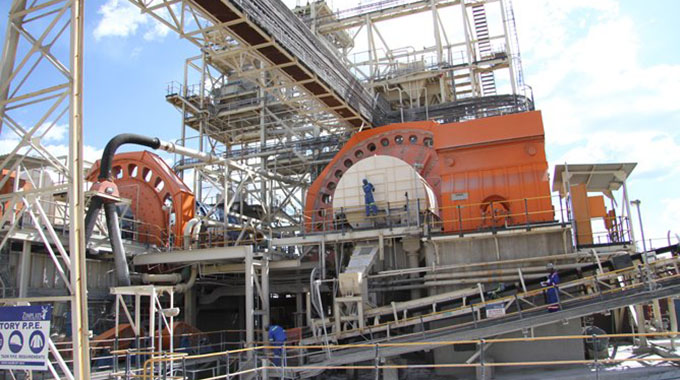Mine upgrades lift Zimplats production
Zimbabwe’s leading platinum producer, Zimplats’ 6E (six elements) production for the
half-year to December 31, 2022 increased by 6 percent to 300 738 ounces mainly due to
the positive impact of the introduction of the third concentrator module.
The six elements (6E) are platinum, palladium, rhodium, gold, ruthenium and iridium.
Mr Alex Mhembere, the group’s chief executive officer, said ore mined during the period
increased by 9 percent to 3,8 million compared to the same period last year, driven by
mine upgrades.
“This was mainly due to increased production output at Bimha and Mupani mines. Bimha
Mine has been upgraded from 2,5 metric tonnex per annum (Mtpa) to 3,1 Mtpa, while
Mupani budget production output has increased from 0,4 Mtpa to 1,1 Mtpa,” he said in a
production update.
Tonnes milled increased by 9 percent compared to the same period last year at 3,4
million. Mr Mhembere said 6E head grade at 3,39 grams per ton (g/t) was marginally
lower compared to 3,41g/t achieved in the same period last year due to increased
contribution of ore from lower grade mines.
For the period under review, the group declared an interim dividend of US$100 million.
The group’s revenue at US$545,5 million was 7 percent lower than prior period largely
due to lower sales volumes with actual 6E ounces sold at 291 751 against 322 752 ounces
in the prior period.
Mr Mhembere said the prior period benefitted from the sale of matte produced and
stockpiled due to the administrative delay in the export of matte towards the end of the
previous financial year.
Cost of sales was 7 percent higher at US$315,6 million compared to the same period last
year figure of US$294,9 million.
“Consequently, gross profit margin was 42 percent, an 8 percent reduction from 50
percent achieved in the same period last year mainly due to the impact of higher than
budget operating cost per 6E ounce in the current period,” he said.
Mr Mhembere also highlighted that depressed average US$ metal prices also had an
adverse impact in the current period.
Cash operating cost per 6E ounce produced at US$822, increased by 17 percent from the
US$707 reported in the same period last year.
“This was driven by inflation-related price increases on major consumables, 42 percent
power tariff increase with effect from October 2022 and increase in intermediated money
transfer tax (IMTT) charges from 2 percent to 4 percent.
“Resultantly, profit before income tax for the period at US$221,5 million was 15 percent
lower than US$261 million recorded in the same period last year.”
Mr Mhembere said the development and upgrade of Mupani mine which replaced
Ngwarati, Rukodzi and part of Mupfuti mines is on schedule.
He said Mupani mine targets 3,6 million tonnes per annum in August 2028 a total of
US$225 million had been spent on this project as at December 31,2022 against an
approved project budget of US$386 million.
Mr Mhembere said the upgrading of Bimha mine as part replacement of Mupfuti mine is
progressing well having achieved nominal production of 3,1 million tonnes per annum.
“The outstanding scope to sustain capacity targets completion in the first quarter of
FY2024. A total of US$51 million had been spent on this project as at 31 December 2022
against an approved project budget of US$82 million,” he said.
The group’s third concentrator plant at Ngezi was successfully commissioned in
September 2022 and ramped up to nameplate capacity in October 2022.
Mr Mhembere said a total of US$97 million had been spent against an approved budget of
US$104 million as at 31 December 2022.
“The remaining relates to process optimisation and financial close out.” The smelter
expansion and sulphur dioxide (SO2 ) abatement continued implementation with on-site
construction and offsite manufacturing of equipment.
Mr Mhembere said the refurbishing of the mothballed base metals refinery (BMR) was
approved by the board in November 2022 with an authorized capital budget of US$190
million and approved completion date of October 2025.
The BMR targets a capacity of 5 200 tonnes of nickel equivalent to current production
volumes.-The Herald











